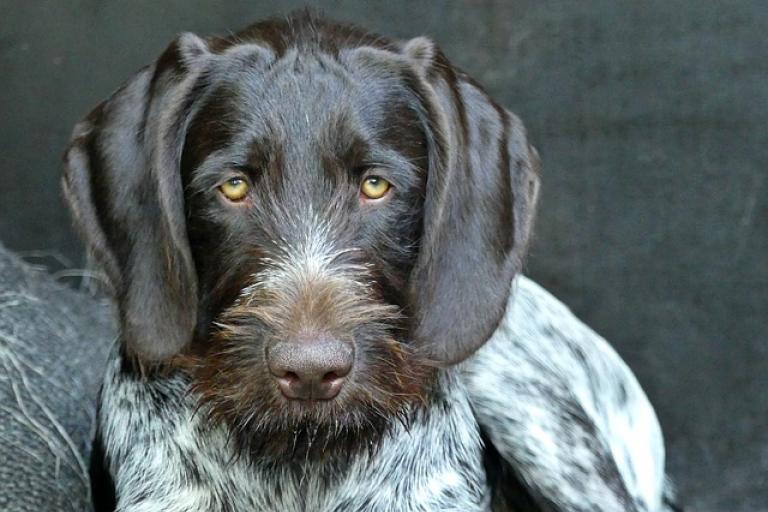Furnishing - Improper Coat (Coat type Dog)
Furnishing (wire-haired) refers to the length and texture of the hair. The dog has rather wavy to curly coat and very pronounced hair on eyebrows and beard. This coat structure occurs in many different breeds.
Genetic Test: available in Shop
General Information
- Furnishing (wire-haired) refers to the length and texture of the hair.
- The dog tends to have wavy to curly coat and very pronounced hair on eyebrows and beard.
- This coat structure occurs in many different breeds: Portuguese Water Dog, Lagotta Romagnolo, Poodle, Soft Coated Wheaten Terrier, Dachshund, Brussels Griffon, Chinese Crested Dog, German Wirehaired, Havanese, Irish Terrier, Schnauzer, Scottish Terrier, Tibetan Terrier, etc.
- In some breeds this trait is preferred, in others it is required.
- However, if this feature is not present in breeds where it is required, the normal coat texture is called "improper coat".
Test Information
Locus Information: RSPO2 Gene: IC-F-Allel
This mutation test detects an insertion in the RSPO2 gene.
Test in Shop
Also in the:
Genotype and Lab Report
Inheritance: autosomal-dominant
→ Animals with one or two copies of the gene (F/n, F/F) show the phenotype Furnishing. Animals with no copy of the gene have a "normal" coat.
Genotypes:
n/n = Two copies non-functional
No variant for furnishing, the dog has a "normal" coat, sometimes called "Improper Coat".
F/n = One copy intact and one copy non-functional
The dog shows the coat structure Furnishing and passes it on to 50% of its offspring.
F/F = Two copies functional
The dog shows the coat structure Furnishing and passes it on 100% to its offspring.
Appearance
Literature
Vaysse, A., Ratnakumar, A., Derrien, T., Axelsson, E., Rosengren Pielberg, G., Sigurdsson, S., Fall, T., Seppälä, E.H., Hansen, M.S., Lawley, C.T., Karlsson, E.K.: Identification of genomic regions associated with phenotypic variation between dog breeds using selection mapping. PLoS Genet 7:e1002316, 2011. Pubmed reference: 22022279. DOI: 10.1371/journal.pgen.1002316.
Cadieu, E., Neff, M.W., Quignon, P., Walsh, K., Chase, K., Parker, H.G., Vonholdt, B.M., Rhue, A., Boyko, A., Byers, A., Wong, A., Mosher, D.S., Elkahloun, A.G., Spady, T.C., André, C., Lark, K.G., Cargill, M., Bustamante, C.D., Wayne, R.K., Ostrander, E.A.: Coat variation in the domestic dog is governed by variants in three genes. Science 326:150-3, 2009. Pubmed reference: 19713490. DOI: 10.1126/science.1177808.
Parker, HG., Chase, K., Cadieu, E., Lark, KG., Ostrander, EA.: An insertion in the RSPO2 gene correlates with improper coat in the Portuguese water dog. J Hered 101:612-7, 2010. Pubmed reference: 20562213. DOI: 10.1093/jhered/esq068.
Further information is available at Online Mendelian Inheritance in Animals.

